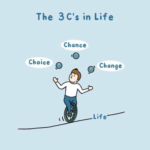A Game-Changer for Startup Founders
As a startup founder, one of the biggest challenges is figuring out how to attract customers and turn them into loyal buyers. If you’re just starting out, you might struggle with pricing, marketing, and ensuring a steady flow of revenue.
That’s where the Four-Product Framework comes in.
I first learned this concept from Daniel Priestley, and it has completely changed the way I think about product-led growth. It’s a structured way to move people from awareness to loyalty, ensuring you don’t rely on just one source of income.
Here’s how it works:
1. Gift: Give Something Valuable for Free
The first step is simple—give something valuable away for free.
This could be:
✅ A free e-book
✅ A downloadable guide
✅ A free webinar or workshop
✅ A free course or email series
✅ Free templates, checklists, or tools
Why? Because trust is built before a transaction happens. If people don’t know you, they won’t buy from you. Giving something for free removes the risk and allows them to experience your value firsthand.
Key Insight: The best gifts solve a small but meaningful problem for your audience.
2. Product for Prospects: A Low-Cost Entry Offer
Once someone has received your free gift, the next step is to offer them a low-cost product—something they can buy without too much hesitation.
This could be:
💡 A paid workshop or challenge
💡 A short course
💡 A detailed guide or premium e-book
💡 A one-time consultation
The goal here is simple: get your prospects to make their first financial commitment.
Once they pay—even a small amount—they are much more likely to trust you with bigger purchases later.
Key Insight: Keep this product affordable but packed with value.
3. Main Product: Your Core Offering
This is the real business—the main product or service that brings in the majority of your revenue.
It could be:
🔥 A high-end course
🔥 A coaching program
🔥 A software subscription
🔥 A physical product
🔥 A membership community
This is what your business is built around. But notice something—by the time someone gets here, they’ve already engaged with your brand. They’ve received value for free, they’ve made a small purchase, and now they’re ready for something bigger.
Key Insight: When you nurture your audience properly, selling your main product becomes effortless.
4. Product for Clients: Upsell to Existing Customers
Most businesses stop after selling their main product, but this is where real profits happen.
Once someone has bought your core product, ask yourself:
🔄 What else do they need?
🔄 How can I continue helping them?
This could be:
🚀 A VIP or premium version of your product
🚀 A mastermind group or ongoing support
🚀 A done-for-you service
🚀 Additional tools, templates, or upgrades
The easiest sale is to an existing customer—someone who already knows and trusts you. This final step ensures long-term business stability and customer retention.
Key Insight: Your best customers are the ones who already bought from you—serve them well.
Final Thoughts: Apply This to Your Startup
If you’re launching or growing a startup, this framework can simplify your business model and create a natural flow of customers from awareness to loyalty.
✅ Start by giving value for free.
✅ Offer a low-cost entry product.
✅ Sell your core product—the main business.
✅ Keep existing customers engaged with premium offerings.
This removes friction from your sales process and ensures that you’re always nurturing new leads while serving existing customers.
If you’re a startup founder, ask yourself:
👉 What can I give for free?
👉 What’s a low-cost product I can sell to prospects?
👉 What’s my main product?
👉 How can I serve my clients even after they buy?
Master this framework, and you’ll build a business that attracts, converts, and retains customers effortlessly.
Keep building, keep growing, and keep leading with value.
Learning never stops.
Take a moment to reflect and act on what resonates with you.
Keep evolving.



